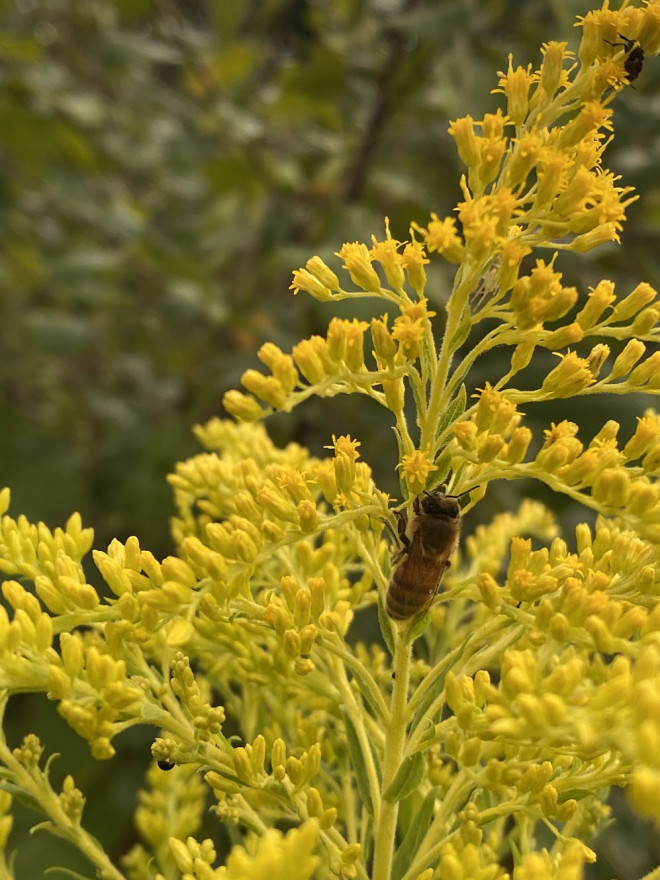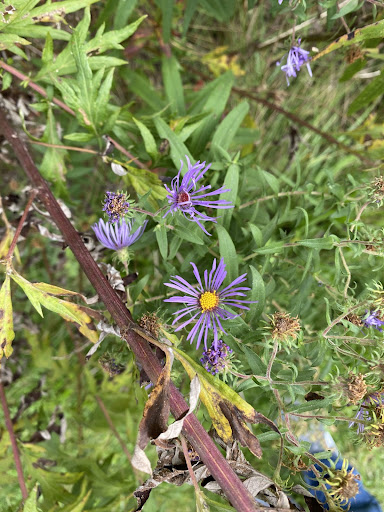
(Kevin R. Darcy)

(Kevin R. Darcy)
What do you expect to hear when walking out into a meadow? Perhaps the sound of tall grass being crushed underfoot or the chirps of crickets, the sounds of birds flying overhead, maybe even the buzz of bees gathering nectar for honey? What do you expect to see? The classic paintings and pictures of meadows include tall grass, all sorts of animals, and of course, beautiful flowers.
And yet somehow I hadn’t seen a native wildflower until I turned 15 and even then it was one singular beautiful yellow flower with greenish red leaves blooming on a cold March day. This Trout Lily, Erythronium americanum, was my first experience with a wildflower. How could it have taken me that long to see a wildflower? This question sent me on a crusade of research to find out the answer.
The United States is home to a large variety of wildflowers that provide a vast array of services such as habitat and food for many native insect and animal species. Unfortunately, due to the vast decline of important wildflowers such as milkweed, many populations of specialist species of insects that depend on these flowers have also declined as a result.

One staff member at SUNY College of Environmental Science and Forestry, Molly Jacobson, a pollinator ecologist at the school, has helped restore some of these plants by helping ESF become an affiliate with Bee Campus USA. The initiative at ESF is part of a larger national initiative to help conserve native pollinators.
The Bee Campus is just one part of the Bee City USA initiative created by the Xerces Society for Invertebrate Conservation. This is an international nonprofit organization that protects the natural world through the conservation of invertebrates and their habitats. When I asked Jacobson about what it means to be a “bee campus,” she said it’s a pledge to create pollinator habitats, decrease pesticide use, and perform community outreach each year as well as a variety of other things. ESF became an affiliate in 2022, continuing a long history of commitment to the environment.
Clearly it’s important to protect wildflowers and spaces for the pollinators, but the pollinators themselves must also be proactively protected. According to Jacobson, pollinators are incredibly diverse and the term pollinator can include bats, birds, bees, flies, and even beetles depending on where in the world you live.
However it’s also important to know that no pollinator purposely pollinates plants, but it’s more of an “accident” through evolution and some species are better at pollinating than others. For example, a bee with a lot of hairs is better than a wasp with few to no hairs, however without any of these species, many of our flowering plants and flowering crops would struggle.
Furthermore, without many of these native flowers certain more specialized insects would also struggle to survive. In fact, Jacobson even mentioned that the biggest threat facing pollinators is a loss of habitat, meaning that planting even a five foot area of native flowers could make a huge difference in the ability of pollinators to survive in your local area.
She went so far as to say, “Restoring habitat on any scale makes a difference.” But, was the reason for me not seeing many native wildflowers due to a lack of diversity in native pollinators or was it due to me not knowing where to look?
This question led me to talk with Jeffry Petracca, an Entomologist from Long Island, NY. Petracca explained that native plants are irreplaceable, as you decrease the biodiversity of native flowers and plants, you lose the amount of native pollinators whether they are insects or other animals, especially in animals that are “specialist” species, those that may only get their nectar from one species of flower. This relationship works both ways and some plants are only pollinated by a few or even one species.

According to Petracca, the biodiversity of pollinators on Long Island, whether they are bees, wasps, flies, beetles, or butterflies; has overall decreased significantly over time. There are subsequently less and less native flowers being seen as well, which he believes is mostly due to habitat destruction through the development of housing, roads, and shopping centers.
But why is biodiversity and the presence of flowers so important? Petracca explained that the more biodiversity a region has, the more stable and resistant to changes the local environment and ecosystem becomes. For example, in an area of low diversity, a flower may only be getting pollinated by one species of beetle, but if there is a cold snap that devastates the population of that beetle, then the flower is no longer going to be pollinated that season.
Conversely, in an area of high biodiversity, that flower may be getting pollinated by 10 or 20 species of bees and beetles. So while a few of those species may suffer due to the cold, the ecosystem as a whole is less affected.
Similarly to Jacobson, Petracca believes that planting native plants in your garden and yard is a great way to help native pollinators in your area. However, when buying plants you must be careful that the plants you are buying are a wild strain and haven’t been specially bred to to not make pollen or nectar.
When buying these “native” flowers you must also make sure they are a species native to your area or state, as some species of native flowers may be native to the United States but not necessarily your area and would provide less of a beneficial effect.
There are many state government environmental agencies that have sheets and information online to help people locate information about which plants are native to their region. Many participants in the Bee Campus program are also putting out information online and, of course, there are a wide variety of books that are available that have native plants local to your area.